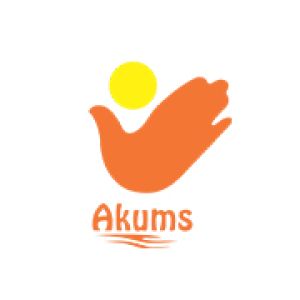Tablet-in-Tablet Formulation: Overcoming Chemical Incompatibilities and Achieving Diverse Drug Release PatternsPosted by Akums Drugs & Pharmaceuticals Ltd on June 10th, 2023 
Tablet-in-Tablet Formulation A tablet-in-tablet (TiT) formulation is a multidimensional tablet consisting of a core (inner tablet) surrounded by an outer shell. The core and shell layers can be designed to have different properties, such as a different release rate, or be composed of different active ingredients. Tablet-in-Tablet formulations have several advantages, such as improving drug stability, increasing bioavailability, and controlling drug release. There are many benefits which include controlled drug release over time, maintaining good therapeutic levels, dipping the medicating frequency, and improvement in patient compliance. They are designed to target specific areas and protect drugs sensitive to the gastrointestinal environment until reaching the intended site. Drug manufacturing has been given a new dimension by pharmaceutical contract manufacturing. Bringing innovation and perfection along with catering to high demand is best handled by pharmaceutical contract manufacturing. They are known to be the best partners in association for drug manufacturing, especially tablet-in-tablet (TiT) formulation. Challenges Faced by Tablet-in-Tablet Formulation However, Tablet-in-Tablet formulations also face challenges related to chemical incompatibilities between the core and shell layers. For instance, the inner tablet may contain acidic or basic drugs that could react with excipients in the outer shell. To overcome this problem, appropriate excipients must be carefully selected to minimize chemical interactions and to ensure the stability of both layers. Another challenge is designing Tablet-in-Tablet formulations that can achieve different drug release patterns. Typically, the outer shell is designed to release the drug quickly, while the core is intended for slower release. However, the release profile of these two layers can be modified by incorporating different excipients, controlling the layer thickness, and adjusting the compression force during tablet formation. Summarising In summary, Tablet-in-Tablet formulations are promising drug delivery systems that can overcome certain pharmacological limitations of conventional dosage forms. However, careful consideration must be given to the excipient selection and formulation design to achieve optimal drug stability and release. Akums Drugs and Pharmaceuticals Ltd. Talking complexity or complications in drug manufacturing is easily overcome through the expertise and experience of Akums Drugs and Pharmaceuticals Ltd. Akums is a WHO-GMP certified pharmaceutical contract manufacturer that in compliance with all the standardized procedures is able to give commendable manufacturing of tablet -in tablet formulations proficiently. They are equipped with extensive R & D labs, world-class infrastructure, the latest machinery, advanced technology, and skilled staff to handle all the technicalities which are required to master the tablet-in-tablet (TIT) formulation.
Like it? Share it!More by this author |


